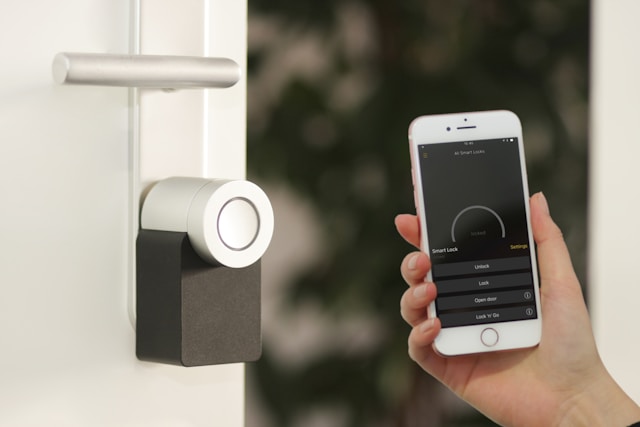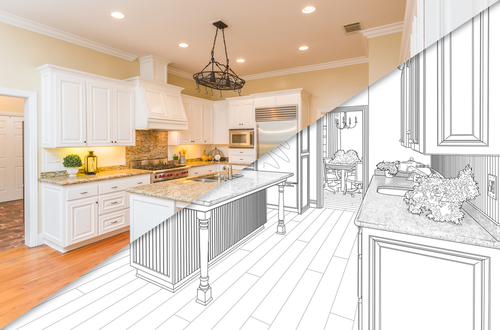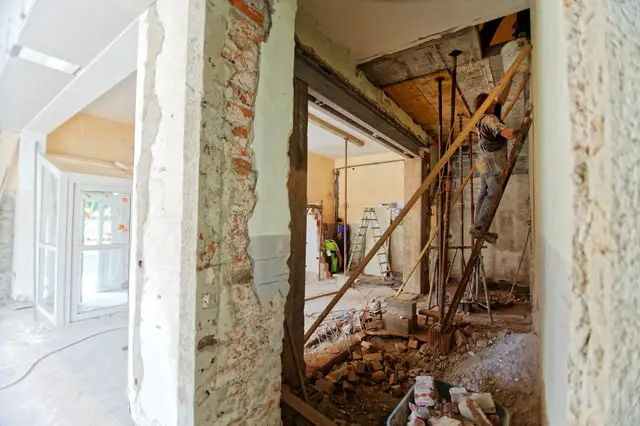Home automation, often referred to as domotics, is the use of technology to remotely or automatically control a wide range of household systems and appliances. Home automation systems enable remote management of various aspects of a household through interconnected devices and systems, often controlled via a central hub or smartphone application. These systems encompass smart devices that regulate lighting, heating, air conditioning, security systems, entertainment equipment, and even kitchen appliances. These systems allow for remote control and automated scheduling, all accessible through mobile apps, voice assistants or central smart home hubs.

For instance, to control lighting, you can opt for smart switches, smart bulbs, motion sensors, or light sensors. Similarly, for climate management, you can employ smart thermostats, air conditioners, temperature sensors, and humidity sensors. One of the primary benefits of home automation systems is enhanced energy efficiency. By automating components such as air conditioning and heating, lighting, and security, homeowners can achieve significant reductions in energy consumption. Furthermore, home automation greatly improves users’ quality of life, creating an environment that seamlessly adapts to their needs and preferences. As smart home technology evolves, homeowners can now effortlessly manage their devices and appliances with just a tap, a voice command, or even through automated schedules they set up in advance. To get the best out of this, employ the expertise of a home automation specialist to set up the system from the start.
What Are the Advantages of Home Automation?
Key aspects of home automation include:
- Integration with Smart Home Ecosystems: Home automation systems often integrate with other smart home devices, creating a cohesive ecosystem. For instance, users can link lights, cameras, and door locks to work together, such as automatically turning indoor lights on and off when the security system is armed or disarmed. Popular platforms like Amazon Alexa, Google Home, and Apple HomeKit facilitate this integration, allowing for comprehensive control and customisation.
- Connected Kitchen and Appliances: With smart kitchen appliances, you can preheat your oven from your phone on your commute home, schedule coffee to brew with your morning alarm, or receive notifications when groceries are running low in your smart fridge. Home automation has brought significant innovation to the kitchen, transforming it into a more efficient and connected space. These intelligent features streamline meal preparation and enhance overall kitchen management, saving time and reducing stress in your daily routine.
- Remote Control and Management: Homeowners can manage their homes remotely, allowing them to control lights or monitor security cameras from anywhere in the world through an internet link.
- Increased Convenience and Comfort: Home automation streamlines everyday living by automating routine tasks such as turning lights on and off, adjusting room temperature, and controlling appliances at a tap or a voice command. One can easily imagine arriving home after a long day to find the lights welcoming you, the thermostat already set to your ideal temperature, and your favourite playlist filling the room. Smart home systems can be programmed with personalised settings that align with your lifestyle, enhancing comfort and efficiency. Even appliances like coffee makers and washing machines can be scheduled to run at specific times, helping you stay on top of daily chores with minimal effort.
- Improved Energy Management and Efficiency: Many home automation systems come equipped with features designed to minimise energy consumption by optimising lighting, heating, and other essential systems, as well as contributing to a smaller carbon footprint, an important consideration for eco-conscious people. Smart thermostats can learn occupants’ behaviours and adjust heating and cooling systems to optimise energy use, resulting in lower utility bills. Automated blinds and curtains and smart lighting systems can be programmed to maximise natural light during the day, reducing the need for artificial lighting.
- Enhanced Security Systems: Smart locks, security cameras, motion sensors, and alarm systems provide a higher level of home security and offer homeowners the ability to monitor their property remotely in real time. These tools provide round-the-clock home surveillance and can send real-time alerts directly to the owner’s smartphone when unusual activities occur, allowing for immediate action if necessary. Moreover, automated lighting can simulate occupancy, deterring potential intruders.
- Lighting Control: Smart bulbs, switches, and sensors facilitate automated lighting schedules and allow for remote management of lighting conditions.
- Climate Control: Smart thermostats, air conditioners, and temperature and humidity sensors enable effective automated temperature regulation and remote adjustments.
- Home Entertainment Systems: Home automation enables the control of TVs, speakers, and streaming devices, both audio and visual, from a single interface, creating a unified and expansive entertainment experience. Smart home entertainment systems allow for seamless integration of audio and video devices. Voice commands can initiate movie nights or play specific playlists throughout the house, creating an immersive entertainment experience tailored to individual preferences.
- Personalised Living Experiences: With home automation, it is possible to create customised home environments based on specific preferences and routines by adjusting lighting, temperature, and media playback as required.
- Health Enhancements: Devices like air purifiers, humidifiers, and smart mattresses are becoming part of the wellness-focused smart home. They track environmental data and adjust settings to support better health and sleep.
- Improved Accessibility: Home automation can make life easier for individuals with disabilities or limited mobility, as it allows them to control their environment with greater ease. Smart devices can assist individuals with disabilities or limited mobility by providing easier control over lights, temperature, and other home systems.
Are There Any Downsides to Opting for Home Automation?
As with all things, there are inevitably some drawbacks to home automation which need to be factored into the decision on whether it is the right choice for you or your family. These include:
- High Initial Costs: Establishing a smart home system can require a significant upfront investment, particularly if you choose a comprehensive setup that includes multiple devices and integrations.
- Ongoing Maintenance: Smart home devices may necessitate regular updates, repairs, or replacements to ensure optimal performance, which can lead to additional expenses over time.
- Privacy Concerns: The data collection practices of smart devices can raise privacy issues for some individuals, leading to understandable unease about how their information is stored and used.
- Security Risks: Smart home devices can be susceptible to hacking or cyberattacks, potentially compromising personal data and the overall security of the home.
- Reliance on Technology and Power: A dependence on technology means that if your internet connection or smart devices experience malfunctions, you may temporarily lose control over important home functions.
In Conclusion
Determining whether home automation is “worth it” or “right for you” hinges on individual needs and priorities. While it provides benefits such as added convenience, enhanced security, and potential energy savings, it also presents challenges, including initial setup costs and ongoing maintenance requirements. Ultimately, the choice to automate your home should be based on a careful evaluation of these advantages and disadvantages, tailored to your unique lifestyle and preferences.
Ultimately, the decision of whether or not to automate your home depends on your specific circumstances and requirements. It might be wise to start small with a few smart devices and gradually expand the system as needed or wanted – a sort of piecemeal build of the system, to see what works for you, and gradually evolve the system over time.

